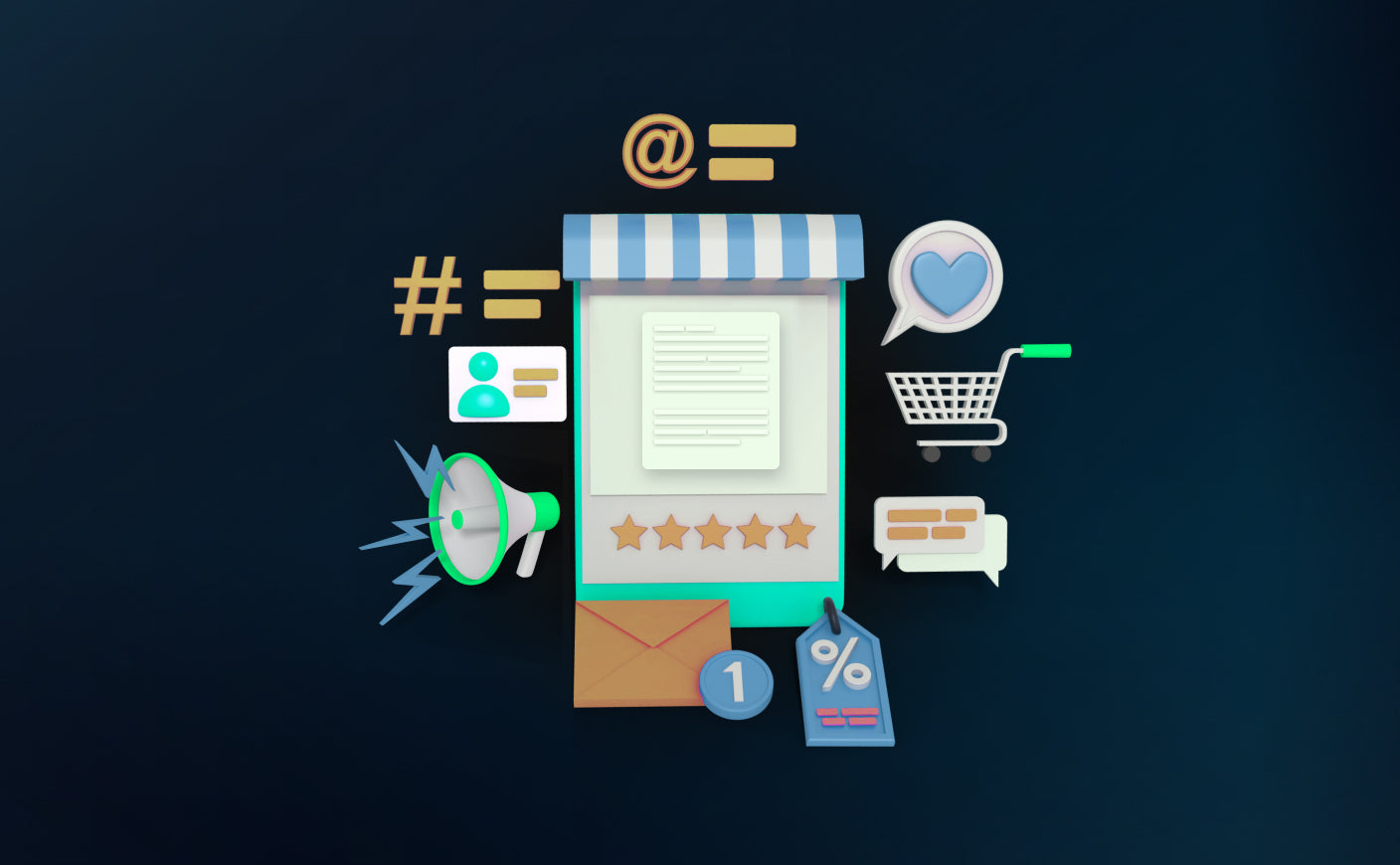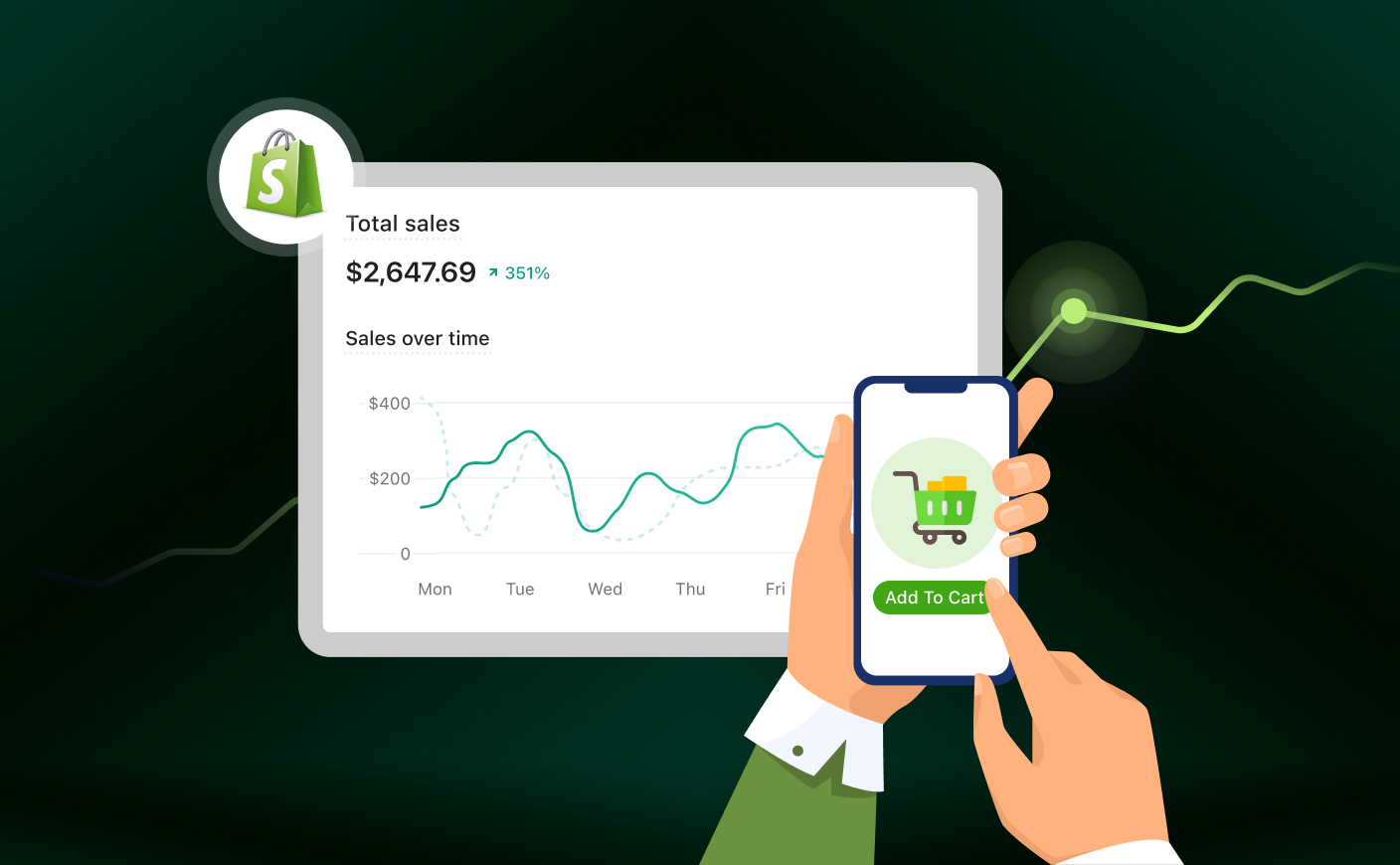Why Agentic AI Is Replacing Chatbots in 2025
AI in 2025
chatbots
chatbots 2025

What if an AI tool could anticipate your needs before you even articulate them?
It’s fascinating and in 2025, it is no longer science fiction. We’re witnessing a major shift where traditional chatbots are quietly but rapidly phasing out from the ecommerce landscape. And their alternate? A new intelligent system known as Agnetic AI which is proactive, autonomous, and far more attuned to human behavior than their predecessors ever were.
Just a few years ago, businesses and consumers were excited about chatbots, those rule-based tools that could automate FAQs and customer service workflows. Then came more advanced AI, like GPT and other neural network-driven models, which allowed bots to understand natural language and generate human-like responses.
It was a big leap forward, no doubt but these systems still needed direction. They waited for input. They reacted.
Now, in 2025, we’ve stepped into something entirely new.
Agentic AI doesn’t just respond. It reasons, decides, initiates, and adapts. It doesn’t wait to be asked—it observes, anticipates, and acts. And that shift, from passive to proactive, from scripted logic to autonomous intelligence is fundamentally reshaping the way we interact with technology.
In this blog, we will explore how this new paradigm is setting the standard for the next generation of AI experiences.
What Is Agentic AI?

To understand why this AI is rapidly replacing traditional chatbots, we first need to properly explore what makes this new generation of AI fundamentally different.
Chatbots are essentially reactive tools waiting for us to tell them what to do.
However, Agentic AI operates with a level of initiative that feels almost human. In addition to answering questions, it’s anticipating needs, solving problems, and sometimes even taking action before we realize we need it. That shift from passive responder to active agent is what sets it apart.
Let’s go through the key characteristics of this AI tool.
#1 Autonomy
Unlike chatbots, which rely on direct prompts to function (think: “What’s the weather today?”), agentic systems are capable of independent action. They infer intent, evaluate possibilities, and initiate tasks without needing step-by-step input.
It’s like going from a GPS that only gives you directions after you type in the address, to a smart assistant that says, “Hey, traffic’s heavy on your usual route—should I book a train instead?”
Also read: Chatbot vs Conversational AI: Which delivers better CX
#2 Contextual Reasoning
Chatbots are typically surface-level in their understanding. They respond to keywords or structured queries. Agentic AI? It goes deeper. It takes into account your past behavior, preferences, current environment, even cultural context—layering that information to create responses that make sense in the moment.
For example, it knows you’re in a different time zone this week and adjusts your calendar suggestions accordingly, without being told.
#3 Goal-Directed Behavior
One of the most exciting shifts is how Agentic AI isn’t just reactive—it’s purpose-driven. It identifies your goals (sometimes better than you can articulate them yourself) and works to achieve them.
It is an AI that not only reminds you to buy groceries, but checks your fridge inventory, predicts what you’ll need for the week, finds discounts, and places the order.
#4 Ecosystem Integration
This AI isn’t limited to a single app or platform. It can easily connect with IoT devices, APIs, SaaS tools, enterprise databases—you name it.
Whether it’s adjusting your home’s thermostat based on your meeting schedule or pulling sales reports into a presentation without you lifting a finger, Agentic AI operates within entire ecosystems. It doesn’t just talk. It does.
But with all that said, to truly appreciate how amazing this AI is, we need to look at what it’s replacing. Because while these new intelligent systems are forging ahead, traditional chatbots are starting to fall behind—and fast.
Despite their initial promise, chatbots are still tied to rigid frameworks and limited understanding. They were built for a different era of digital interaction—one where basic automation was good enough. But in 2025, good enough doesn’t just work anymore. Users want smarter, more intuitive experiences, and the cracks in chatbot technology are beginning to show.
Let’s talk about what’s holding them back.
#1 They Only React—They Don’t Really Think
Chatbots are like that one co-worker who only responds when spoken to—and even then, only if you ask the exact right question. They're not built to take initiative. If you don’t give a clear prompt, they’re just... waiting.
That might be fine for answering “What’s your return policy?” but totally useless when you’re juggling tasks and hoping for a little intelligent support.
#2 They Forget Everything
You’ve probably experienced this: you ask a chatbot something, come back the next day to follow up—and it’s like Groundhog Day. No memory. No continuity. Just the same canned greeting and a repeat of square one.
In 2025, when everything from your fridge to your fitness tracker remembers your preferences, chatbots feel stuck in a loop.
They simply don’t get context, and that makes conversations feel robotic and, honestly, kind of exhausting.
Also read: How AI is enhancing Shopify store development today
#3 They Struggle When Things Get Messy
Life isn’t always clear-cut. Sometimes you’re unsure what you want. You might start asking about travel options and suddenly remember you have a budget to stick to, or a meeting to reschedule.
Humans can handle that kind of shifting conversation without missing a beat—but most chatbots? Not a chance.
They rely heavily on structured flows and clean inputs. If your intent changes mid-convo, or you’re even a little vague, things fall apart quickly.
Why Agentic AI Is The Feasible Solution in 2025?
Now you might be wondering—this all sounds amazing, but what suddenly made it possible? Why is 2025 the tipping point where this AI moves from theory to reality?
Let’s check them out.
Advancements in AI Architectures

#1 Neurosymbolic AI
Neurosymbolic AI offers a hybrid approach - it blends the pattern recognition of neural networks with the logical, rule-based decision-making of symbolic reasoning.
You can think of it this way: traditional AI can recognize a dog in a photo, but it doesn’t “know” what a dog is in a deeper, structured sense. Neurosymbolic systems can do both—they can identify the image and understand related knowledge like “dogs bark,” “dogs are pets,” or “dogs can’t fly.”
This allows Agentic AI to make smarter, context-aware decisions that go way beyond surface-level pattern matching.
#2 Multimodal Learning
We don’t communicate using just words—and now, neither does AI. Thanks to advances in multimodal learning, An Agentic system can process not just text or speech, but also visuals, audio cues, even real-time sensor data.
That means it can interpret your tone of voice, analyze your facial expression, and pick up on non-verbal signals to better understand how you’re feeling or what you really need.
Just think that you are asking your AI assistant for help planning your day while sounding stressed and distracted. A chatbot might respond with a standard “Here’s your schedule.” But an agentic system? It could read the room, adjust your workload, and suggest a break — maybe even play your favorite calming playlist.
#3 Smarter Learning with Long-Term Thinking
In the past, AI was mostly trained to give the best immediate answer. Now, it’s trained to think long-term. It evaluates actions based on how well they align with your broader goals—not just quick fixes.
For example, instead of constantly asking you to approve every small task, an Agentic system learns your preferences and starts taking initiative in ways that save you time and mental energy. Over time, it becomes more accurate, more efficient, and more aligned with how you operate.
Also read: Generative AI: The future of marketing in 2025
Infrastructure Breakthroughs

#1 Edge Computing
An agentic system needs to make fast decisions. Regardless of your needs, it cannot afford to wait for cloud servers to process requests.
Edge computing brings data processing closer to the source (your device, your car, your watch). This means ultra-low latency, which translates to real-time, on-the-spot decision-making.
No buffering, no awkward pauses. Just instant, intelligent action.
#2 5G and Emerging 6G Networks
For the agentic system to work faster and accurately, it needs to be connected with everything around you - at all times.
This is where 5G and emerging 6G networks help a lot. These networks have drastically reduced latency and increased bandwidth, which means faster, smoother communication between this AI tool and all your connected devices.
It’s like upgrading from dial-up to fiber internet, but for your entire digital ecosystem.
#3 Decentralized AI Models
One of the biggest concerns with intelligent AI systems is, naturally, privacy. Nobody wants their every move monitored or stored in a giant data center.
Thankfully, the rise of decentralized AI (eg: on-device learning and federated models) offers a solution. These models can learn and operate locally, without constantly sending personal data to a central server.
That not only builds trust, but also allows Agentic AI to scale—handling millions of users with unique preferences, without compromising on performance or security.
Ethical and Governance Frameworks

#1 Transparent Decision-Making
Remember when chatbots would spit out answers without ever showing their work? It was like talking to a magic 8-ball—answers came out, but you had no idea why.
An Agentic system is different. One of its biggest strengths is its ability to make decisions transparently. These systems can explain why they did something—what factors they considered, what goals they prioritized, and even what trade-offs they made.
This level of clarity helps users feel more in control, and it’s crucial for high-stakes applications like finance, healthcare, or autonomous vehicles.
#2 Bias Mitigation
Bias in AI has been a long-standing issue, and with good reason. Models trained on skewed or incomplete data can end up reinforcing the very inequalities we’re trying to eliminate.
Agentic AI systems are now equipped with real-time bias detection and correction mechanisms. Instead of letting bias quietly shape outcomes, these agents are actively monitoring themselves, flagging questionable patterns, and adjusting accordingly.
This makes interactions more equitable, inclusive, and accurate—especially in systems that touch millions of lives.
Let’s conclude this section with a real life example for better understanding.
MediCore, a health-tech company is making headlines with its Agentic AI-powered Autonomous Triage Assistant—a system that’s already being piloted in major hospitals across Europe and North America.
Here’s how it works:
When a patient walks into an emergency room, instead of waiting in line for a nurse to ask preliminary questions, MediCore’s AI agent steps in—quietly, calmly, and proactively. It doesn’t just fire off a list of symptoms like a chatbot might. It engages in natural conversation, pulls data from the patient’s medical history (with consent), reads real-time vitals from connected wearables, and even analyzes facial expressions and vocal stress levels.
And it doesn’t stop there.
This AI doesn’t just collect data. It infers urgency, cross-references symptoms with real-time public health data (like flu outbreaks or environmental hazards), and then routes the patient to the appropriate care pathway.
Hospitals using MediCore have already reported faster triage times, reduced staff burnout, and more personalized patient care. It’s not replacing doctors—but it is transforming how healthcare systems function behind the scenes.
How Agentic AI Is Quietly Improving Everyday Life
Let us go through all the ways in which this AI system is helping us make a difference in our daily lives.
#1 Helping You Take Better Care of Yourself

Ever had one of those weeks where everything just feels off—your sleep’s a mess, your calendar’s full, and you’ve eaten more takeout than you’d care to admit?
Now imagine your AI noticing that pattern before you even do. It seems that your smartwatch has picked up on increased stress levels and that your meals have become, well… less than ideal. Quietly, without being pushy, it blocks off your calendar for a proper lunch break tomorrow. It shifts a few meetings to make room for a walk or quick workout. Maybe it even suggests an early night with a calming playlist.
That’s what we mean by proactive support. It’s not just tracking you—it’s looking out for you.
#2 Workflows That Manage Themselves (Almost)

Remember those endless email chains where a task gets passed around like a hot potato — marketing waiting on design, design waiting on dev, dev stuck waiting on approvals?
Now imagine an AI that doesn’t just watch this process but actively manages it. That’s what Agentic AI brings to the table.
It keeps an eye on the bigger picture—who’s doing what, what’s slowing down the pipeline, and where things might fall through the cracks. If it notices a potential bottleneck (say, a delay in product approvals), it jumps in: nudging the right person, reallocating resources, or even adjusting the timeline before it becomes a fire drill.
This is real-time orchestration, not reactive micromanagement. And it’s giving teams room to focus on what they do best—without getting bogged down in process drama.
#3 Customer Support That Actually Supports

We all know the brutal truth - traditional chatbot support never quite hit the mark. It was good for FAQs—but if your issue was even slightly out of script, you'd end up shouting “REPRESENTATIVE!” into your phone.
An Agentic system is rewriting that experience entirely.
Say a customer’s order was delayed, and their tracking link is glitchy. Before they even think to reach out, your system (powered by Agentic AI) spots the issue, processes a refund or credit, and sends a personalized message:
“Hey, we noticed something went wrong with your order. We’ve taken care of it—no action needed. Really sorry for the hiccup.”
That’s not just customer service. That’s customer care.
To Sum Up
As we look ahead, one thing is clear: Agentic AI isn’t just a fancier version of yesterday’s chatbots—it’s a whole new mindset. One that doesn’t wait for commands, but understands context. One that doesn’t just respond, but collaborates. And maybe most importantly, one that doesn’t just aim to serve—but to support.
The real takeaway? We’re moving into an era where AI doesn’t just work for us—it begins to work with us. And if done right, that partnership could be one of the most powerful tools we’ve ever created.
Because when technology starts to truly understand us—not just our words, but our world—that’s when things get interesting.
CrawlApps
At CrawlApps, we don’t just build Shopify stores—we create experiences that sell. We’re a bunch of problem-solvers who love turning ideas into stores that actually converts. Whether it’s fixing what’s broken or building something from scratch, we make sure every detail works in your favor. No fluff, no jargon—just real solutions that help your business grow. If you’re serious about Shopify, you’ll feel right at home with us.















